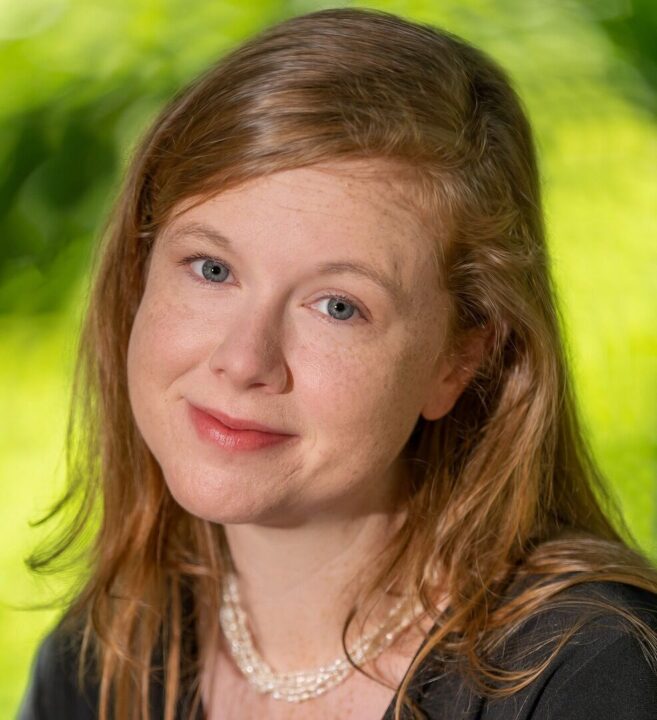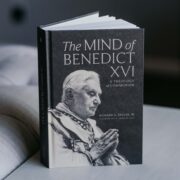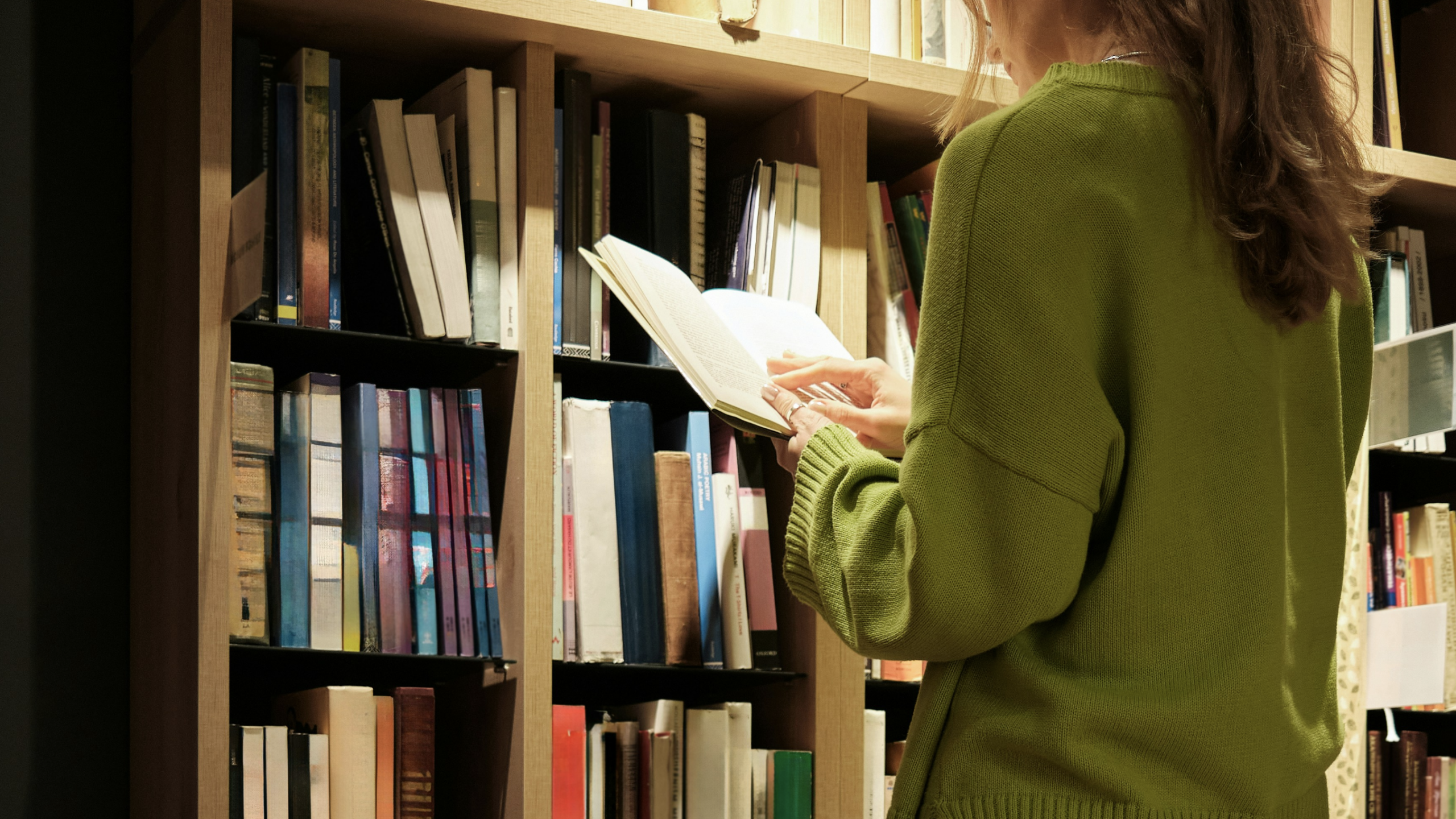In the last decade, since Catholic poet and critic Dana Gioia lamented a present “decline of Catholicism in American letters,” a number of Catholic writers have been organizing new efforts to reverse that trend. These include the founding the Catholic MFA program at University of St. Thomas-Houston, founding various small Catholic literary presses, to editing the quarterly journal Dappled Things, which prints poetry, literary fiction, visual art, and nonfiction which looks “at and through this world, in all its ‘counter, original, spare, strange’ glory,” in the words of Gerard Manley Hopkins, the famous Catholic poet from whose poem “Pied Beauty” the journal found its name.

The current editor-in-chief of Dappled Things, Katy Carl, has written several works of fiction of her own, from her debut novel As Earth Without Water (2021) to her recent collection of short stories, Fragile Objects (2023), published last fall. She was kind enough to answer a few questions about her new collection, her understanding of the good of fiction, and her vocation as a Catholic writer of fiction and meditations.
Alex Taylor: Katy, thanks so much for taking the time to answer some questions about your newly published collection of short stories, Fragile Objects. I believe it was last fall, when I was reviewing your recent debut, the page-turner of a contemplative novel that is As Earth Without Water, that I mentioned to a colleague of mine that I had been reading some contemporary Catholic fiction. “Is it more of the moody-broody stuff?” he asked, meaning that much Catholic literature from the twentieth century on (from authors like Evelyn Waugh, Graham Greene, Flannery O’Connor, and Walker Percy) tended thematically toward the abyss. O’Connor had her own answer for her readers who complained she didn’t deliver “emotional uplift,” but why do you think stories that deal with such extreme difficulties as yours do are good for readers striving for holiness in their everyday lives?
Katy Carl: Oh, “the moody-broody stuff” is such a great phrase. Cheers to your colleague for that one; may I borrow it? Yes, both of my books of fiction deal with difficult material, to the point they might prompt some to repeat Dr. Gina’s advice to her former students in Will Arbery’s Heroes of the Fourth Turning: “Don’t be so dark and complicated.” But if we look around at the world we live in, a world that God created good yet that humans colluding with evil have so seriously marred, we find that things in themselves often look, well, dark and complicated.
Christ didn’t descend to earth, allow himself to be born into poverty and radically misunderstood and betrayed and finally slain on a cross, because things in the Garden were really splendid already and all we needed was a little nudge to recognize some supposed divinity conceived of as our “highest self.” No, we were deeply and terrifyingly lost. Many still are. And even for those who are lucky enough to be brought under the shelter of Christ’s wing, cooperation with grace isn’t a one-and-done deal. The risk of relapse is real. If we never go deeper than clinging to the consolations of God, we might miss out on a full relationship with the God of consolations. And at a lower parallel, if all we want from art—narrative or otherwise—is a kind of surface-level soothing “beauty” of mere appearances, we’ll often miss out on seeing the deeper beauty that can grow out of dwelling with and walking through the sorrowful and fearful and tragic aspects of life.
The problems start to grow when we try to cheat art, or life, out of easy conclusions without engaging real complexity.
In his book Christ and Apollo, Fr. William Lynch says that tragedy leads us into a deeper perception of beauty, “but not by way of beauty.” Perhaps I am drawn to working in the tragic mode, not from sheer melancholia (though that’s a factor), but because it also functions as a corrective to a habitual disposition.
Speaking just for myself, when faced with evil I naturally tend either to fall into a doom spiral of despair or to brittlely, brightly avoid sorrow altogether—even reports of sorrow. Both these overreactions can keep me culpably aloof, both from my own heart and from the ability to walk with or offer help to others who suffer. Now I am all for doing what is necessary to hold good boundaries and guard one’s peace of soul. At the same time, I think we often don’t realize that when we see a story of pain passing before us and say (aloud), “I can’t deal with that,” we might be inadvertently telling those who must suffer through just such pains, “I can’t deal with you.” Which is not the disposition of the saints toward those who need our compassion. Rather, St. Paul reminds us to “rejoice with those who rejoice” and “grieve with those who grieve.”
But tragedy corrects both these tendencies. We can’t arrive at eucatastrophe without endurance. Holiness itself is often reflected in a readiness to endure evil rather than commit it—or at minimum, to evoke a line from St. John Henry Newman, to countenance things as they are and not as we would have them be. Part of tragedy’s cathartic effect is to stretch our capacity for endurance, patience, and what Fr. Luigi Giussani calls co-suffering: the willingness to walk with and support those in pain the way that Mary and St. John stayed at the foot of the cross with Christ.

Speaking of co-suffering, those who suffer in real life need to be refreshed and restored. When they turn to art, they often want to see the balance tip not toward the tragic but toward divine and human comedy. There’s nothing at all wrong with that desire. (On the contrary, I hope that my next project, a long comic novel about a big Catholic family, nourishes just that kind of “reality hunger.”)
The problems start to grow when we try to cheat art, or life, out of easy conclusions without engaging real complexity. Sometimes we just want the “takeaway,” the capsule version, the executive summary. But art isn’t built to give us that. Prayer isn’t built to give us that. In both art and prayer, you must go through the experience for yourself and receive what God has in store for you there: not for someone else, but for you, unique and unrepeatable.
A good deal of what has been termed Catholic fiction in the twentieth century was seen as such either because of its focus on the clergy (J.F. Powers’ Father Urban Roche, Graham Greene’s whiskey priest, or Robert Hugh Benson’s Monsignor Masterman come readily to mind, to take several examples) or its clever use of Catholic symbolism (such as the naming of Dr. Thomas More in Walker Percy’s Love in the Ruins). While your collection contains some Catholic characters or settings and is certainly rich in symbolism, those elements do not exhaust how your Catholic faith informs your writing. To pose a question that easily deserves a book-length response, how would you describe the way in which possessing a Catholic epistemology—knowing as one taught and nourished by Christ’s Church—relates to your work as a writer of fiction and to the leisure of your readers?
I love the way you frame this, for many reasons, but first because it speaks to many different levels on which a work of literature can be thought of as “Catholic.” Is it because of the people or places it investigates? Is it because of the themes explored, their relation to the Catholic intellectual and aesthetic and spiritual traditions? Is it because, deep down, the work gets at something small-c catholic in the sense of universal? All of those answers are, or can be, “yes,” but there’s still more to be said. Writers have to avoid falling prey to what I call “Catholic window dressing”—where a crucifix or a rosary shows up as an all-too-obvious symbol—where the objects are treated only as a kind of superficial narrative furniture, the accessories of faith without its substance.
Having familiar access to this kind of furniture is not what either you or I mean by a “Catholic epistemology.” Rather, it’s having access to a clear path into questions of whether we can know anything, what we can know, and how we can know that we know it.
In all this, a well-formed Catholic will take as given a particular set of convictions: that the bodily senses, while not perfect in the present state of the world, still ordinarily offer us trustworthy and meaningful information that we have to acknowledge; that as human persons, body-soul composites with intellect and will and passions, we are good but wounded unto death, and we need a kind of healing we can’t invent for ourselves; that the God we rely on for that healing entered into human history out of sheer love so as to heal us, to reveal himself to us by words and actions, to give us the capacity to enter into his own eternal life; that history therefore matters, that time therefore matters, that human knowledge and perception and emotion, our choices and our attitudes and our receptivity to reality—it all matters.
We are not only meaning-making but meaning-discovering creatures, and narrative is part of how we come to discover meaning.
These convictions, or rather this single integrated vision, may be connatural to the human person, but it’s only fully brought to life in us by God’s action. This vision, if we let it, will guard us against the twin temptations of angelism and bestialism—the essentially Gnostic idea that the only trustworthy knowledge comes to us through our intellect versus the essentially pagan idea that the only trustworthy knowledge comes to us through our bodies. Both those temptations bear hard on us today. And they will ruin art in a hurry, to say nothing of life: but in between these poles of the spectrum, there is such a wide scope for felicity.
But whether we will find that felicitous open space is by no means predetermined, because there’s so much contrary force working to push us toward one extreme or another. Then, too, in a historical moment when humanity has once again disastrously lost the plot on what a human person even is and how we are allowed to treat ourselves and each other—as if history hadn’t already been flush with enough examples of wrong answers to this question—I think we are responsible to speak to a more robust vision of the soul in whatever way we can. The vision is worth as much attention as we can concentrate upon it. Learning how to give that attention, and to create art that both stems from and leads back to that attention, is what contemplative realism—the literary style identified by my editor and teacher Dr. Joshua Hren—is all about.
But because we are dealing with whole human persons, not intellects in vats or ghosts in machines, we can’t do justice to the fullness of truth in a merely apologetic mode. As St. Augustine says, we mustn’t fall into the kind of trap where we love words more than we love the realities they represent. At the same time, we are not only meaning-making but meaning-discovering creatures, and narrative is part of how we come to discover meaning. We don’t just generate meaning, we arrive at it, because it’s there to arrive at whether or not we ever happen to stumble across it.
To have a Catholic epistemology is to have the confidence that the truths of creation are rooted in the Truth of God, that all apparent contradictions have their ultimate resolution at some higher level, that the most real things in life remain objectively grounded in Being and therefore capable of standing up to all the tests life can throw at them. If we have this view, then we also recognize, as Dostoyevsky writes and Hren’s Contemplative Realism emphasizes, that “realists need not fear the results of their study.”
. . .
Read Part II of this interview here on Evangelization & Culture Online.
